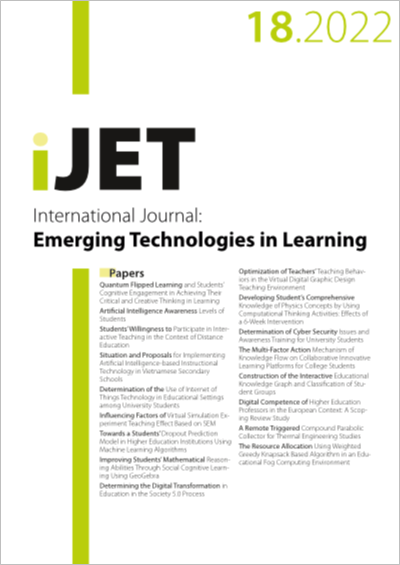The Resource Allocation Using Weighted Greedy Knapsack Based Algorithm in an Educational Fog Computing Environment
DOI:
https://doi.org/10.3991/ijet.v17i18.32363Keywords:
Fog Computing, Cloud Computing, Resource allocation, Time-sensitive applications, Weighted Greedy KnapsackAbstract
The Internet of Things ecosystem pertains to web-enabled connected devices that operate built-in processors to record, send, and act on information from their surroundings via embedded communication hardware. IoT applications span from education, healthcare to self-driving cars. The high delay supplied through the connecting network to the data centers and huge data traffic can cause the system to become congested, so the cloud is not suggested for delay-sensitive applications and it is extremely difficult to provide educational applications, particularly in a mix of cloud and fog conditions. Fog computing was created to address this problem and improve time-sensitive applications by considering quality of service (QoS). Allocation of resources and scheduling of tasks are challenging issues for IoT applications in a fog environment. Resources are required for each educational application that includes several modules to run. In this paper, we used Weighted Greedy Knapsack (WGK) based algorithm for the resource allocation to the modules/components in the fog system. We have considered the smart parade application to provide certain services/resources and proposed method was experimented in iFogSim. Proposed method shows a better energy consumption and execution cost than that of concurrent, First-Come-First-Served (FCFS) and Delay-Priority algorithms.
Downloads
Published
How to Cite
Issue
Section
License
Copyright (c) 2022 Shruthi G (Submitter); Monica R Mundada, S Supreeth

This work is licensed under a Creative Commons Attribution 4.0 International License.


